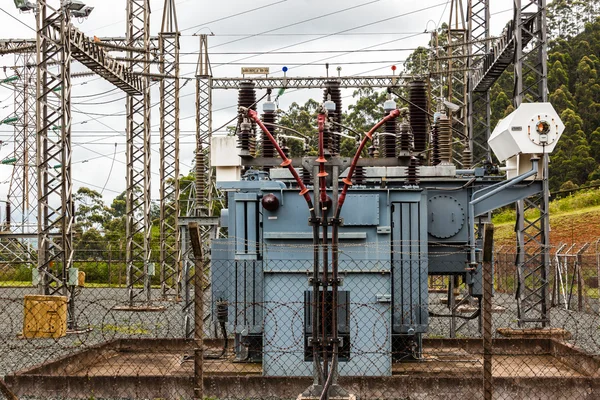India’s Booming Solar Power Sector: Challenges and Opportunities
The Rapid Growth of India’s Solar Power Industry
India’s power sector is expanding rapidly, fueled by the increasing demand of a growing economy. At the forefront of this transformation is solar power, which has seen an extraordinary 32-fold growth in just six years. With developers launching one mega solar power project after another, India is on track to achieve its ambitious renewable energy targets. However, despite these impressive advancements, significant challenges remain.
Addressing the Transmission and Distribution (T&D) Challenges in Solar Power
One of the primary obstacles to India’s solar power expansion is the lack of an efficient and reliable transmission and distribution (T&D) infrastructure. The solar power being injected into the grid is not matched by corresponding T&D upgrades, creating bottlenecks that could lead to system failures. If states fail to enhance their T&D capabilities, they risk facing critical grid congestion issues, similar to what has been observed in Punjab. Hartek Group emphasizes that investments in smart grid technology and infrastructure are crucial to optimizing solar energy distribution across the country.

The Urgent Need for Upgrading Grid Infrastructure
India’s solar power expansion must be accompanied by a robust and modernized grid system. To minimize transmission losses and ensure efficiency, a gradual shift to higher voltage transmission lines—from 440 KV to 765 KV and eventually 1,200 KV—is necessary. Additionally, states must proactively plan their T&D networks in parallel with solar project developments, as seen in Andhra Pradesh. National Green Energy Corridors, spearheaded by the Power Grid Corporation of India Ltd (PGCIL), play a vital role in streamlining inter-state transmission, but state governments must also invest in localized grid enhancements.
Grid Connectivity Challenges for Large Solar Projects
While rooftop solar power integrates smoothly into existing networks, large-scale ground-mounted solar projects present significant challenges. Unlike conventional power plants that generate electricity consistently, solar energy is intermittent—fluctuating throughout the day. This unpredictability makes it crucial to enhance grid resilience through smart grid solutions and advanced energy storage technologies.
The Role of Energy Storage in Solar Power Optimization
A major limitation of solar power is the lack of efficient storage solutions. India must invest in advanced battery technologies to store excess energy generated during peak sunlight hours for use at night. Countries like the United States and several European nations are making significant strides in solar battery innovations, and India must follow suit to ensure uninterrupted solar energy availability.
Boosting Research and Development in Solar Technology
Reducing the cost of solar power through indigenous research and development (R&D) is imperative for long-term sustainability. India has the potential to become a global leader in photovoltaic (PV) technology by fostering industry-government collaboration and investing in outcome-driven R&D. Enhancing the efficiency of solar modules and inverters will further drive cost reductions and improve overall energy output.
Navigating Financial Challenges and Sustainable Investments in Solar Energy
While government incentives, tax concessions, and subsidies have propelled the solar industry forward, long-term sustainability requires a transition away from grant dependency. Solar developers must adopt financially viable business models to withstand potential fluctuations in policy-driven incentives. Strengthening state utilities to ensure reliable solar power procurement will be critical in maintaining growth momentum.
Keeping Pace with Rapid Technological Advancements in Solar Power
The fast-evolving nature of solar technology presents both opportunities and challenges. Innovations in solar panels, inverters, and storage solutions require continuous adaptation from developers. Companies that stay ahead of these advancements will gain a competitive edge in the global market.
India’s Path to Becoming a Global Solar Power Leader
With abundant sunshine and vast expanses of non-cultivable land, India has the potential to emerge as a solar power superpower. Favorable government policies, technological innovation, and infrastructure advancements will be key in overcoming existing challenges. By embracing these solutions, India can not only meet its ambitious renewable energy goals but also set a global benchmark in sustainable solar power utilization.
Conclusion
The Indian solar power sector is on an unprecedented growth trajectory. However, addressing transmission inefficiencies, investing in energy storage, and fostering technological innovation will be essential for sustained progress. If you are looking for expert solutions in solar power infrastructure, Hartek Group is here to help. Contact us today to learn more about how we can support your renewable energy goals. With strategic planning and continued investment, India can harness its full solar power potential and lead the world in renewable energy transformation.
FAQ’s:-
1. What are the main challenges in India’s solar power sector?
India’s solar power sector faces grid congestion, transmission inefficiencies, energy storage limitations, and financial sustainability issues.
2. Why is transmission and distribution (T&D) crucial for solar power?
Without efficient T&D infrastructure, excess solar energy cannot be transmitted effectively, leading to grid instability and energy losses.
3. How can energy storage improve solar power reliability?
Advanced battery storage systems allow excess solar energy to be stored during the day and used at night, ensuring continuous power supply.
4. What role does technology play in India’s solar power expansion?
Innovations in solar panels, inverters, and smart grids help enhance efficiency, reduce costs, and integrate solar power more effectively into the grid.
5. Can India become a global leader in solar power?
Yes, with strategic investments in infrastructure, R&D, and policy support, India can set global benchmarks in renewable energy and solar power adoption.
Share:
Explore More
Keep up-to-date with the most trending news stories that are shaping the world today.







